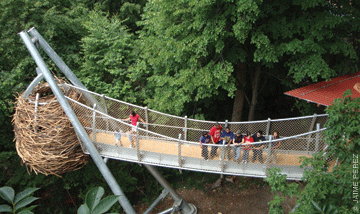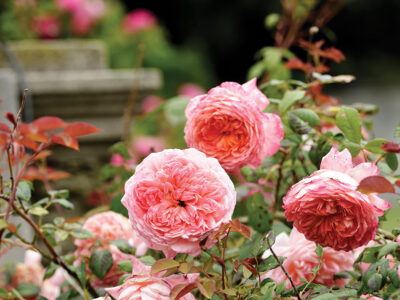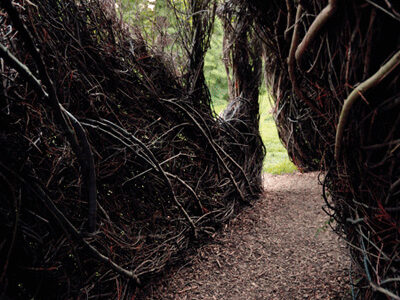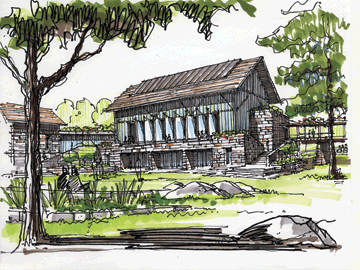
Before he became director of Penn’s Morris Arboretum, in 1991, Paul Meyer was a kid with a thing for treehouses. “They weren’t fancy ones, where my dad did all the work,” he reminisced in July. “My brother, my buddies, and I scavenged bits and pieces of wood from construction sites and built them up in the trees.” One of his favorites was hammered into the branches of a white oak—the species after which his Ohio hometown was named.
“We just gravitated toward the big trees.”
On Independence Day weekend, Meyer got to relive that feeling along with about 2,000 visitors of all ages. After five years of planning and six months of construction, the Arboretum opened a 450-foot-long catwalk that hangs over a hillside into a mixed forest canopy overlooking the Wissahickon River.
Out on a Limb, as the new fixture is called, is the centerpiece of a multi-part exhibit focusing on urban forestry. It was designed by Metcalfe Architecture & Design, a Philadelphia firm that has devised child-centric exhibits for the Please Touch Museum and the Franklin Institute, among other venues. Forever Young Treehouses, a Vermont nonprofit that specializes in the construction of treehouses for disabled children, collaborated on the elevated walkway, which is wheelchair accessible.
Perched on slender “micropile” foundations carefully situated to minimize the disruption to underlying root systems, the walkway’s structure and its material components reinforce the exhibit’s pedagogical goals. The deck boards were milled from sustainably and locally harvested black locust, a species native to the Northeast that is valued for its resistance to rot. Hand rails were crafted from dense, durable hornbeam—also called ironwood—which was used historically in tool handles, coach wheels, and machinery spindles. Arches of laminated white oak serve as a gateway, and cherry timbers support the roof of a central pavilion. Living specimens of all these species can be found on the Arboretum’s grounds.
The canopy walk’s vista over the Wissahickon River is meant to underscore the fact that human communities depend on trees for more than timber. “Where the Wissahickon flows into the Schuylkill is immediately above one of the major water intakes for the city,” Meyer says. “And trees are very important for keeping the water clean, and cool, and full of good kinds of life. We really want to make that connection, that this forest is protecting the Wissahickon.” It’s also a refuge for birds and other animals. On opening weekend, visitors caught glimpses of a newly hatched robin whose nest was fortuitously lodged in a crook of branches a few feet below the catwalk.
Other stations of the exhibit address trees’ root systems, their influence on air temperatures, and their growth rates and life spans.
The exhibit’s designers hope that all this tree appreciation will spur an enlarged sense of responsibility for urban greenery.
As project architect Aaron Goldblatt pointed out in a blog entry during construction: “That we need trees goes almost without saying. What may be less apparent is how important we are to the survival of trees in our cities.”
Much of Philadelphia’s tree stock is the legacy of previous generations, who created parks and lined streets with elms and plane trees. Meyer hopes that the Arboretum’s new crown-level view will inspire another generation to grow and replenish the city’s wooded assets.
“If you’re out in a wild forest, trees do perfectly well without us,” he says. “But in our communities, if you’re living in the city, the only way you’re going to have a tree on the sidewalk is if somebody goes to the effort to plant that tree, care for that tree, and tend it throughout that lifetime. And that tree is important. It can cool the air, it helps clean the air, it adds to your real estate value, it makes the neighborhood much more comfortable.
“So trees do a lot for us, but we have to reciprocate.”
—T.P.




